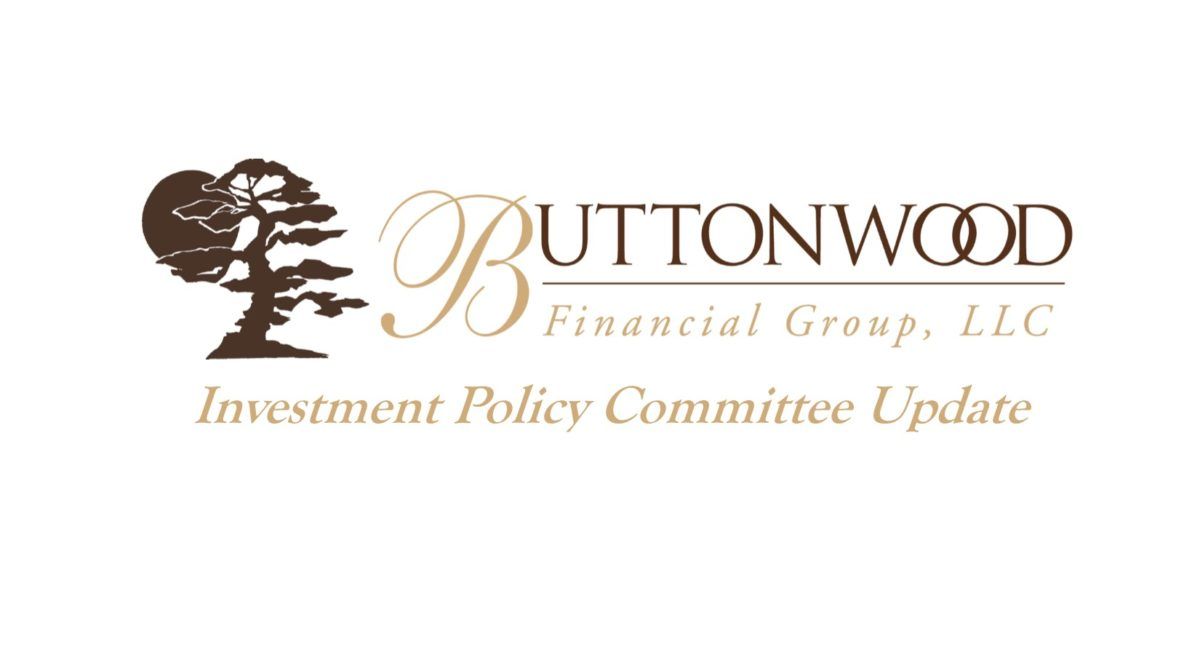Buttonwood Investment Policy Committee Update - July 2022
With recent headlines full of stories about elevated prices and supply chain issues, central bankers today face a stark trade-off as they race to raise rates and contain inflation – Do they crush economic growth or live with higher inflation?
In the most recent inflation release we saw headline inflation continue to surprise to the upside. The CPI print for June showed an increase to 9.1% from the previous month level of 8.6%, driven largely by energy costs approaching 3%. Corporations and consumers still appear strong, and the broadening of inflationary pressures into “stickier” core components such as shelter and services, leads us to believe the inflation story will be more persistent than previously anticipated.
Regardless of what the Fed and other central banks do now, the list of challenges in place seem to be creating global production and supply chain constraints leaning toward higher longer-term inflation. We believe the balancing act required to manage these challenges is likely to lead to a series of shorter and more volatile economic cycles. It’s likely rate hikes will curb demand driven inflation but hinder growth, while a higher tolerance for inflation supports growth but hurts bond prices. In a world where inflation is driven by supply side shocks, management of inflation via an interest rate only policy is an imperfect tool: By raising rates, the Fed can typically slow demand, but they can’t impact inventory or supply chain issues directly.
Beyond generally higher inflation, we continue to believe the current inflation spike is at or near peak levels. We have already witnessed a meaningful reduction in wholesale gasoline prices, oil prices and commodity prices over the past 2 months which should dampen inflation readings in the near term. In addition to a drop in commodity prices, we are seeing signs of supply chain pressures easing (shipping costs and delivery delays are easing, retail inventories are building, used car prices are falling). Bank deposits, which account for approximately 90% of M2, have fallen into the bottom quartile relative to history, and are heading towards zero growth. If we continue to see M2 growth remain low, this should eventually help decelerate inflation.
Since first quarter GDP growth came in at a surprising negative 1.6% annualized rate, indicating a shrinking US economy, we could experience a “technical” recession with a second quarter of negative GDP growth in Q2. We have seen expectations for Q2 GDP gradually moving lower through the quarter, with some estimates already negative such as Atlanta’s GDP Now forecast showing Q2 growth at -1.6% as of July 19th. The Conference Board, in contrast, see’s Q2 GDP growing at 0.8%.
What to watch
We believe the Fed will be adamant about raising rates until they see a decrease in inflation. Overall, our view is that inflation will likely remain well above recent averages and above the Fed’s target of 2% going forward, but we should start to see a gradual decrease in inflation during the second half of 2022.
Looking forward, we continue to believe wage growth will be one of the keys to determining inflation, Fed interest rate policy, recession risk, and ultimately, the bull/bear case for stocks and bonds. Wage growth is uniquely important today given the influence of pandemic and war-related shocks that are unlikely to repeat in the future. Decreasing wages means some relief on the inflation front and possibly less aggressive Fed tightening. Persistent strength in wages comes with sticky price pressures and a resolutely hawkish Fed.
Positioning Investments
As a result of what we believe will be a longer-term trend between the fight against inflation using higher interest rates and the relating negative impact on economic growth, we have investment assets positioned to be more nimble and deliberate in the management of active risk.
Considering the current outlook for inflation, recession and market crosscurrents, we are increasing the resiliently of our allocation to focus on performance in a lower growth economic environment. For Q3 we have adjusted allocations to continue to broadly reduce risk and even our exposure between growth and value. In the first half of the year, we reduced equity exposure and slowly decreased our equity overweight from 4% to a neutral stance vs. benchmark.
Within equities in 2022, we have maintained our overweight to the US and underweight to Emerging markets. We reduced exposure to European stocks as the war in Eastern Europe began. And after more than a year of higher trends for the energy sector, we began to take profits on our energy stock and commodity positions. We have also continued the course of reducing our sector positions, factor tilts and active risk.
In fixed income, we continued to position ourselves underweight duration (long maturity bonds) in 2022, however we have reduced that underweight as interest rates have risen. We added diversifying opportunities in TIPs and convertible bonds in an effort to increase portfolio resilience.
In summary we have:
1. Balanced investment assets for both potential inflation & recession:
While inflation remains a major concern for markets and our base case continues to be that a recession is not immediately on the horizon, we believe markets have recently begun to focus more on recession risks. We are using this moment to take profits on our inflation focused positions, adding to defensive and core positions.
2. Reduced active risk and pulling stock/bond allocations closer to benchmark:
Conflicting economic data points, continued elevated inflation and rising odds of a recession have, in our view, led to unusually high unpredictability and warrant a more cautious (though not yet bearish) approach.
3. Maintained a preference for US over International:
Despite reducing the magnitude of our regional tilts, we remain overweight the US and underweight International Developed and Emerging Market stocks as the toll of war in Europe and Covid shutdowns in China have caused a drop in regional consumer sentiment and near-term economic prospects outside the US.
We will continue to provide ongoing updates on our views and investment positioning. Should you have specific questions about our strategy, please let us know and we will make sure to review details at our next meeting. And while we don’t recommend fixating on short term market fluctuations, if you would like to check specific investment performance across all your accounts, our Buttonwood Portal is available 24/7. Or you can contact us, and we will provide reports specific to your questions and financial life.
Thank you for your continued trust and allowing us to coordinate your asset management as part of our Family CFO services!
Recent Buttonwood Articles

Are you ready to explore the benefits of your very own Family CFO?





